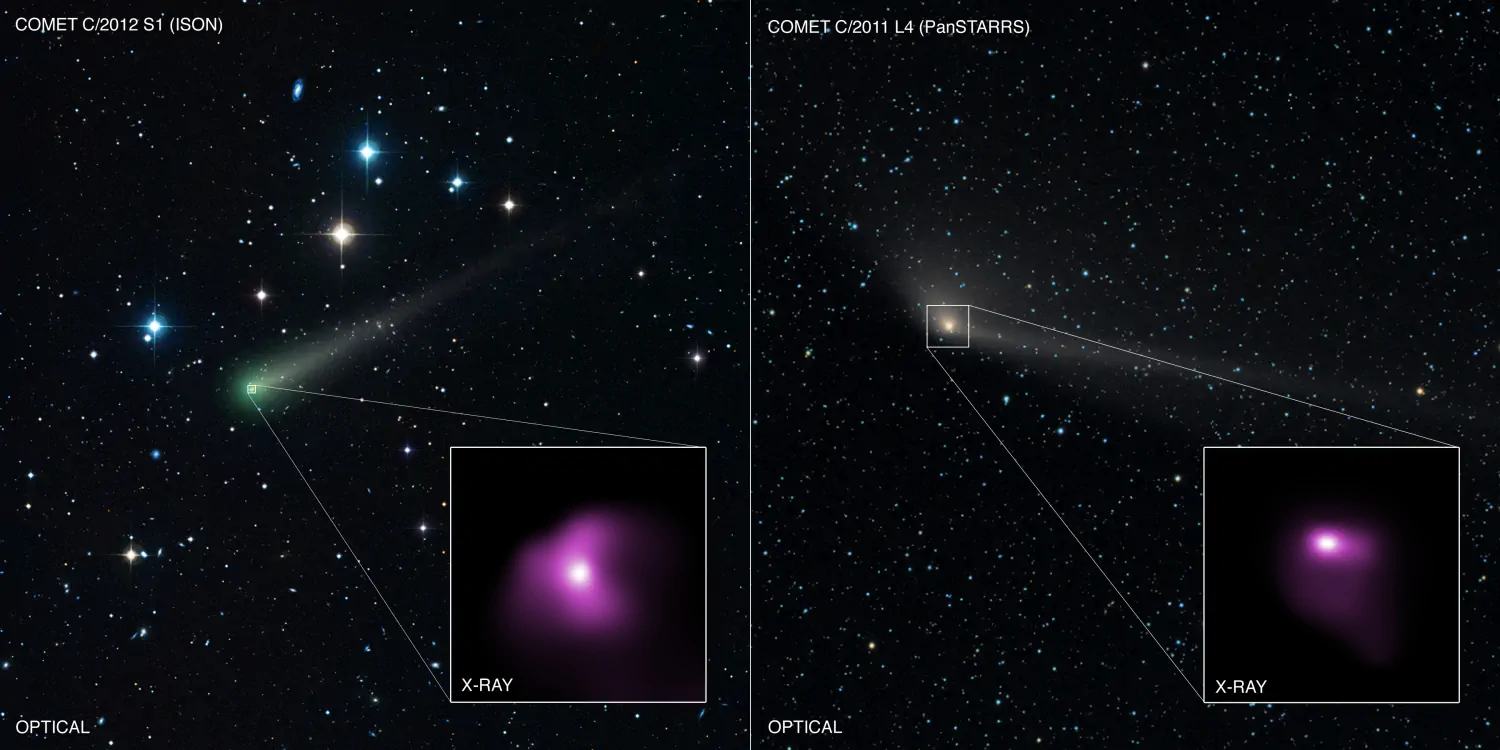Research Topics
Proper Motions in Extragalactic Jets
Jetted outflows from AGN are a well-established phenomenon in extragalactic radio sources. Jets are known to propagate with bulk relativistic motion over kiloparsec-scale distances, and several jets have been detected in multiple energy bands, including X-rays. Direct observation of apparent jet velocities via proper motion studies measure properties of the jet, such as line-of-sight angles, jet flow kinematics, and the origin mechanisms of knotted structure present within the jet.
X-ray observations provide the best probe for sites of particle acceleration as high energy radiation is produced by more energetic particles. The relatively short lifetime of these high-energy particles also makes X-ray proper motion studies uniquely capable of discriminating between various jet emission mechanisms, such as adiabatic compression and impulsive particle acceleration. With this in mind, I utilize Chandra X-ray observations to measure proper motions of jets in nearby radio galaxies. I measured an average proper motion along the X-ray jet of Centaurus A, and I detected clear proper motions of several knotted structures within M87. These results are the first detections of X-ray proper motions in either system, and the X-ray data agrees well with existing measurements in the radio, optical, and UV bands. These measured motions represent the highest precision measurements performed by Chandra, to date.
Black Holes at the Highest Redshift
The number of high-redshift black holes studied in X-rays (z > 4) has drastically increased in recent years. These discoveries provide new opportunities to investigate fundamental properties of the early Universe, such as black hole formation rates as well as the evolution of extended X-ray emission and jets over cosmic time. The presence of high-redshift quasars also places tight constraints on black hole formation rates that directly challenge our current understanding of growth and feedback in the early Universe, necessitating further analysis.
I applied my expertise on jets towards analyzing high-redshift systems, where interactions between the jets and ISM generate some of the youngest known examples of extended X-ray structures. My examination of these high-redshift sources with archival Chandra data shows a diverse range of X-ray spectroscopic and morphological properties in these young sources. Leveraging the high-angular resolution of Chandra, I have also discovered several high-redshift sources with clear evidence of extended X-ray emission on arcsecond-scales, some of which do not possess a corresponding radio jet. All of these results provide valuable constraints on the formation and evolution of X-ray jets over cosmic time.
Comet X-ray Emissions
Beyond my research on extragalactic systems, I also study high-energy emissions from planetesimals, such as asteroids and comets. Comets are ice-rich planetesimals generated during the initial period of planetary formation. As a comet approaches perihelion, it absorbs solar energy and ejects neutral material from its surface outward via sublimation. The neutral ejecta forms a diffuse cometary atmosphere, known as the coma, that generates X-rays from charge-exchange interaction with solar wind ions as well as through coherent scattering of solar X-rays. Cometary X-rays may be used to measure composition and morphology of the coma, map plasma interaction structures, and determine physical properties of the Solar Wind. The study of cometary X-rays therefore provides vital information regarding the initial chemical/dust composition of a stellar systems and its chemical evolution.
My research on cometary X-rays has demonstrated a comet's unique capability as a remote diagnostics tool of both astrophysical plasma interaction and Solar Wind composition, and my recent studies also probe coma densities and composition via the first detections of solar X-rays scattered by cometary dust & ice particles. I am additionally assisting in defining comet-related science goals for upcoming X-ray missions. Implementation of modern advances in X-ray optics will provide fantastic increases in sampling rates of the comet population, permitting the first statistical study of cometary X-ray emissions from a wide variety of comet classifications.
Recent discoveries of exosolar comets within our Solar System, such as 1I/Oumuamua and 2I/Borisov, have also provided a unique opportunity to apply my cometary expertise. I am presently leading a collaboration on studying X-rays from these exocomets. Results from these exotic sources will be compared against solar comets for evidence of compositional and/or structural difference in exosolar visitors. The detection rate of these unique comets for the next decade are presently debated, with some scientists quoting a rate of 1 per year courtesy of new large-sky surveys, like the Large Synoptic Survey Telescope. If true, comet/asteroid scientists will provide a vital component of exoplanetary studies by investigating the local primordial debris ejected during exoplanetary formation.

